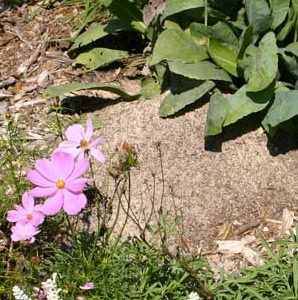Fire Ant Control in Arkansas
Imported fire ants (IFA) were accidentally introduced into the United States from
South America about 70 years ago and the first documented infestation of these ants
in Arkansas was in El Dorado in 1958. IFA are identified by their painful sting, which
produces a small pustule (white bump) on the victim within 8 to 24 hours.
Check out our two fire ant specialists, John Hopkins (retired) and Kelly Loftin as they demonstrate how to apply treatment for fire ants in the fall.
Extension specialists and county agents work in every county to help residents combat the problem. Imported fire ants are
a serious pest, but fortunately their impact upon our lives can be minimized through
patience and the use of integrated pest management practices.
Download fire ant video transcription.
20 Questions About Fire Ants
Fire Ant treatment for homes
Our experts offer a cost-effective and proven procedure that provides long-term ant
suppression in home lawns, ornamental turf, area-wide treatment programs and other
nonagricultural land.
Get advice on managing fire ants near your home
How to identify imported fire ants
How can you tell if you have imported fire ants? How long do they live? What should
I do if I encounter a fire ant mound? Answers to these questions and more can be found
in our Top 20 Fire Ant Question resource guide.
Download our Top 20 fire ant FAQs
Two-step fire ant control
This method is suggested for areas with a high number of mounds and low numbers of
beneficial native ants. The method should be done twice yearly.
Download the two step method
Managing fire ants in urban areas
The first step in fire ant control is proper identification. Our resource guide steps
you through the process and gives you specific details on how to treat for electrical
equipment, homes and buildings, playgrounds, and other common infestation sites.
Get urban fire ant control best practices
Managing fire ants in a home garden
Dr. John Hopkins presented this PowerPoint presentation to Master Gardeners in 2017.
His slides are full of information about distribution, biology, and control of the
invasive species in a home garden.
Download the PowerPoint slides




